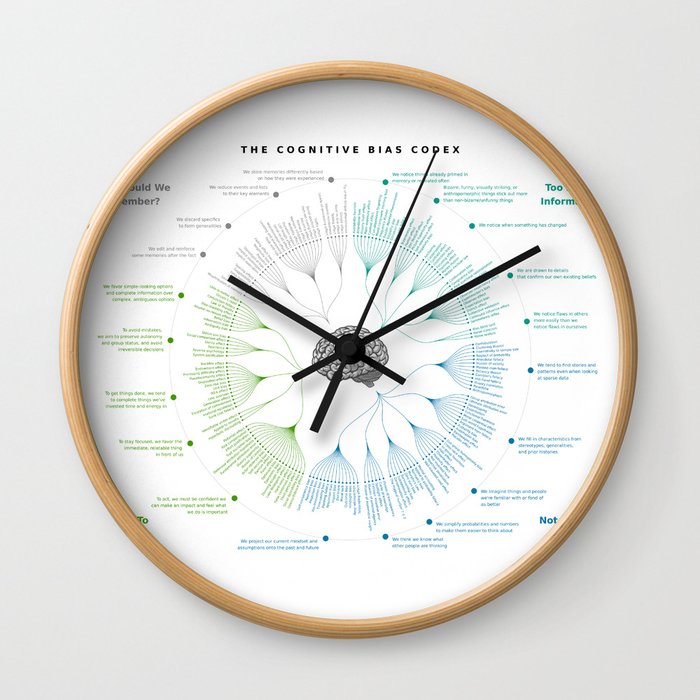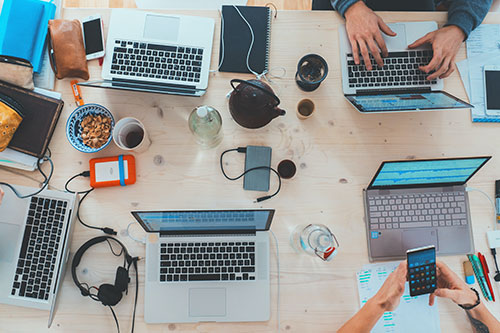20 Cognitive Biases That Teach Us How to Think for Ourselves
As humans, we like to believe that we are rational beings who make informed decisions based on facts and evidence. However, the truth is that our brains are often influenced by various cognitive biases that can affect our judgment and decision-making processes. These biases are mental shortcuts that our brains take to process information quickly, but they can sometimes lead us astray, causing us to make irrational choices or hold onto false beliefs.
As parents or educators, it's crucial to teach kids and ourselves how to think critically and objectively, and to be aware of these cognitive biases that can impact our thinking. Here are 20 cognitive biases that can teach us how to think for ourselves and make more informed decisions:
- Confirmation Bias: This bias occurs when we seek out information that confirms our pre-existing beliefs and ignore evidence that contradicts them. To counter this bias, consider all sides of an argument, especially if it's one you disagree with. Research and evaluate information from multiple sources.
- Anchoring Bias: This bias happens when we rely too heavily on the first information we hear or see, considering it as authoritative. To combat this bias, seek out second, third, and fourth opinions or sources when making decisions or forming beliefs. Gather a variety of perspectives before coming to conclusions.
- Bandwagon Effect: This bias occurs when we tend to do or believe things because many other people also do or believe the same things, similar to lemmings following each other. To avoid this bias, think independently and objectively. Critically evaluate whether something is genuinely good, helpful, or useful, rather than just following the crowd.
- False Memory Bias: This bias happens when we can be led to believe things that aren't true, often through leading questions or the power of suggestion. To address this bias, do not over-rely on the accuracy of the memory, especially if someone else is helping to remember. Verify information and seek evidence.
- Availability Heuristic: This bias occurs when we think that an event is more likely to happen because it's memorable or widely covered in the news, even if it's not statistically probable. To counter this bias, critically evaluate information and not to be swayed solely by the availability of information or its prominence in the media.
- Dunning-Kruger Effect: This bias happens when non-experts overestimate their capabilities. To address this bias, know valuable skills take time to develop, and no one is an expert overnight. Be humble and continuously strive to improve and learn.
- Hindsight Bias: This bias occurs when people believe they "knew it all along" after an event has occurred, leading to overconfidence in their ability to predict the future. To avoid this bias, use past experiences as data, but not to rely solely on them for predicting future outcomes. Look for patterns and evaluate probabilities objectively.
- Sunk Cost Fallacy: This bias happens when we continue to invest in something simply because we have already put significant resources into it, even if it's not logical or beneficial. To counter this bias, recognize when it's best to cut the losses and make decisions based on the current and future value rather than past investment.
- Groupthink: This bias occurs when people conform to the opinions of a group, even if they personally disagree deep down. To avoid this bias, know the importance of voicing own opinions, even if it goes against the consensus of a group. Think independently and critically evaluate information.
- Overconfidence Bias: This bias happens when we tend to overestimate our abilities, knowledge, or the accuracy of our beliefs. To address this bias, be aware of the limitations and to critically evaluate own beliefs and assumptions. Seek feedback and different perspectives to ensure a well-rounded understanding of a situation.
- Authority Bias: This bias occurs when we tend to trust and follow authority figures without questioning their expertise or motives. To avoid this bias, question authority and critically evaluate information provided by experts or figures of authority. Seek evidence and multiple sources to verify information.
- Emotional Bias: This bias happens when our emotions influence our decision-making processes. To counter this bias, be aware of the emotions and how those can impact thinking. Take a step back, take deep breaths, and objectively evaluate situations without being solely guided by emotions.
- In-group Bias: This bias occurs when we tend to favor those who are similar to us or belong to the same group, and we may be biased against those who are different. To address this bias, know the importance of diversity and inclusion, and evaluate people based on their character, actions, and values rather than superficial characteristics.
- Gambler's Fallacy: This bias happens when we believe that previous random events influence the likelihood of future events, such as thinking that a coin toss is more likely to land on heads after a series of tails. To avoid this bias, know the concept of independent probabilities and that each event is independent of previous events.
- Self-Serving Bias: This bias occurs when we attribute our successes to internal factors and our failures to external factors. To counter this bias, take responsibility for the actions and objectively evaluate the strengths and weaknesses without blaming external factors for the failures.
- Selective Attention Bias: This bias happens when we only pay attention to information that aligns with our beliefs or interests, and ignore information that challenges them. To address this bias, know the importance of being open-minded and consider diverse perspectives. Actively seek out different viewpoints to gain a well-rounded understanding.
- The Halo Effect: This bias occurs when we form an overall positive or negative impression of someone based on one prominent trait or characteristic. To avoid this bias, evaluate people based on a combination of their actions, behaviors, and character rather than relying solely on one aspect.
- Stereotyping Bias: This bias happens when we make assumptions about a person or group based on stereotypes or generalizations, without considering individual differences. To counter this bias, know the importance of treating each person as an individual and not making assumptions based on preconceived notions or stereotypes.
- Reactance Bias: This bias occurs when we feel a strong urge to rebel or go against something when we perceive our freedom or autonomy is threatened. To address this bias, be aware of emotional reactions and evaluate situations objectively without impulsively reacting out of a sense of rebellion.
- Information Bias: This bias happens when we place too much importance on the quantity of information rather than the quality or relevance of information. To avoid this bias, know the importance of critically evaluating the reliability and credibility of information, rather than relying solely on the abundance of information.
In conclusion, being aware of cognitive biases and learning how to think critically and objectively is crucial in today's world. Teaching kids and ourselves to recognize and address these biases can help us make more informed decisions, form well-reasoned opinions, and think independently. Encouraging a curious and skeptical mindset, valuing diverse perspectives, and being open to changing our beliefs based on evidence are essential for developing critical thinking skills in kids and promoting rational decision-making.
By addressing cognitive biases early on, we can equip ourselves and children with the tools needed to navigate the complexities of the world with a discerning and thoughtful approach. It's important to remember that no one is immune to biases, as they are inherent in human cognition, but by acknowledging and actively working to mitigate them, we can become more objective and rational thinkers. So, let's strive to cultivate a culture of critical thinking in our children and ourselves, empowering them to question, evaluate, and make well-informed decisions based on evidence and reason, rather than succumbing to the pitfalls of cognitive biases.





